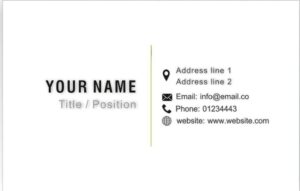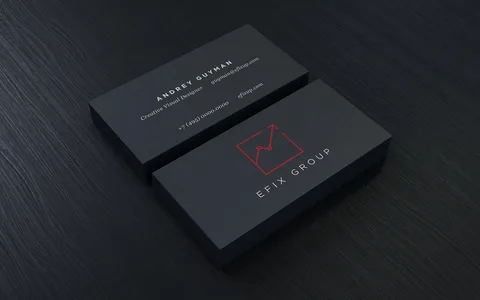Business cards are a crucial tool for professionals across various industries; funeral homes are no exception. The design and content of a business card can say a lot about the services provided and the values of the business. It serves as a lasting impression, facilitating future communication and helping build relationships. In the context of a funeral home, a business card must balance professionalism and compassion, ensuring that it communicates the solemnity and sensitivity of the services offered.
The Importance of a Thoughtful Design
The design of a funeral home business card should reflect the nature of its services—compassionate, respectful, and dignified. A funeral home deals with people going through one of the most difficult times of their lives. As such, it is imperative that business cards convey empathy and support without being overly simplistic or unprofessional.
Elements of a Funeral Home Business Card
-
Color Scheme:
The colors chosen for the business card should evoke a sense of calm and respect. Neutral colors such as white, beige, and light gray are often preferred for their soothing attributes. Muted greens and blues can also be effective, offering a sense of tranquility and comfort. -
Typography:
The typography should be clean and legible. Serif fonts often convey a classic and dignified feel, while sans serif fonts can provide a modern and clear appearance. It’s important to avoid overly ornate fonts that could be difficult to read or appear out of place. -
Imagery and Symbols:
Including subtle imagery can add a personal touch to the business card. Common symbols such as doves, crosses, or flowers can provide a visual representation of peace and remembrance. It is essential, however, to ensure that these images are understated and do not overwhelm the card’s overall design. -
Layout:
The layout should be clean and not cluttered. Important information should be easily accessible, with a clear hierarchy that guides the reader through the card’s content. -
Materials:
The quality of the cardstock can also make a significant impression. A thicker, high-quality cardstock can convey a sense of reliability and longevity, which is important for funeral services.
Read About the Future of Customer-Business Interactions: How AI Revolutionized
Essential Information to Include
Company Name and Logo
The company name and logo should be prominently displayed at the top of the card. The logo should be professional and resonate with the overall ethos of the funeral home, embodying its values of respect and empathy.
Contact Information
At its core, a business card’s primary function is to facilitate contact. Therefore, the card should include:
-
Business address
-
Phone numbers
-
Email addresses
-
Company website
-
Social media handles (if applicable)
Services Offered
embalming, cremation, traditional funerals, memorial services, and reception facilities. Common services might include:
-
Funeral planning
-
Grief counseling
-
Burial and cremation services
-
Memorial services
-
Pre-need planning
Personalization
To establish a direct line of communication, it can be beneficial to include the name and position of a contact person. This adds a personal touch and can make clients feel more comfortable reaching out.
A Case for Modern Design Elements
While traditional elements have their place, modern design features can also be integrated to enhance the card’s functionality and appeal. For instance, incorporating a QR code can provide easy access to the funeral home’s website or a digital memorial page. This addition bridges the gap between physical and digital interactions, providing a comprehensive resource for clients.
Designing with Empathy
Understanding the Audience
The primary audience for a funeral home business card includes individuals dealing with loss, family members seeking pre-planning services, and professionals in related fields (such as healthcare providers and legal advisors). Understanding their emotional state and the context of their needs is vital for creating a design that resonates deeply.
Tone and Language
The tone and language used on the business card should be comforting and reassuring. Avoid overly sales language. Instead, opt for words that convey support and reliability. Phrases like “Here to support you in your time of need” or “Guiding you through every step” can be comforting.
Ethical Considerations
Funeral services are deeply personal and culturally sensitive. The design and information on the business card should respect these sensitivities and avoid anything that could be deemed inappropriate or offensive.
Sample Business Card Design
To give a practical example, here are a few sample text designs for different parts of a funeral home business card. This is designed to encompass the considerations discussed above:
Front of the Card
[Company Logo]
Serenity Funeral Home

Services:
-
Funeral Planning
-
Grief Counseling
-
Burial & Cremation Services
-
Memorial Services
-
Pre-Need Planning
Back of the Card

Conclusion
An effective funeral home business card is more than just contact information on a piece of cardstock. It is a tool for communicating empathy, professionalism, and reliability. By carefully considering design elements such as color, typography, and layout, and ensuring that essential information is present and easily accessible, a funeral home can create a business card that leaves a lasting, positive impression. Integrating modern elements like QR codes can further enhance the utility and reach of the card, bridging the gap between physical and digital interactions. Ultimately, the goal is to design a card that meets the emotional and informational needs of its audience, offering support and guidance during difficult times.
